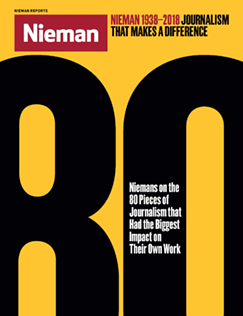
After she and a friend took a child’s bike and scooter that were sitting outside, Sade Jones—who had never been arrested before—was rated a “medium risk” for future crime by AI software
By any measure, we are living through a golden age of journalism and the impact is palpable. But as we enter the third era of computing—otherwise known as artificial intelligence—it’s more important than ever for journalists to push beyond our misplaced optimism and fears and uncover the hard truths about the future we’re building. This is why ProPublica’s “Machine Bias” series was both fascinating and fundamental. Investigating algorithms, the data sets, the artificial intelligence (AI) frameworks, and the people whose values already live inside our machines is impossibly difficult work. ProPublica was able to show what we all knew anecdotally: that our AI systems are riddled with bias, automated bias leads to real-world social and economic injustices, and that there’s no real effort in place to fix existing fundamental flaws. This team proved why transparency is paramount as we ask machines to do our thinking for us.


